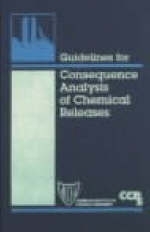
Guidelines for Consequence Analysis of Chemical Releases
Wiley-AIChE
978-0-8169-0786-1 (ISBN)
This Guidelines book provides technical information on how to conduct a consequence analysis to satisfy your company's needs and the EPA rules. It covers quantifying the size of a release, dispersion of vapor clouds to an endpoint concentration, outcomes for various types of explosions and fires, and the effect of the release on people and structures. Special Details: Includes CD-ROM with example problems worked using Excel and Quattro Pro. For use with Windows 95, 98, and NT.
The CENTER FOR CHEMICAL PROCESS SAFETY (CCPS), an industry technology alliance of the American Institute of Chemical Engineers (AIChE), has been a world leader in developing and disseminatinginformation on process safety management and technology since 1985. CCPS has published over 80 books in its process safety guidelines and process safety concepts series. For more information, visit www.ccpsonline.org.
Preface. Acknowledgments.
1989 CPQRA Guidelines Acknowledgments.
Acronyms.
Chapter 1. Introduction.
1.1. CPQRA Definitions.
1.2. Consequence Analysis.
Chapter 2. Source Models.
2.1. Discharge Rate Models.
2.1.1. Background.
2.1.2. Description.
2.1.3. Example Problems.
2.1.4. Discussion.
2.2. Flash and Evaporation.
2.2.1. Background.
2.2.2. Description.
2.2.3. Example Problems.
2.2.4. Discussion.
2.3. Dispersion Models.
2.3.1. Neutral and Positively Buoyant Plume and Puff Models.
2.3.2. Dense Gas Dispersion.
Chapter 3. Explosions and Fires.
3.1. Vapor Cloud Explosions (VCE).
3.1.1. Background.
3.1.2. Description.
3.1.3. Discussion.
3.1.4. Example Problems.
3.2. Flash Fires.
3.3. Physical Explosion.
3.3.1. Background.
3.3.2. Description.
3.3.3. Example Problems.
3.3.4. Discussion.
3.4. BLEVE and Fireball.
3.4.1. Background.
3.4.2. Description.
3.4.3. Example Problems.
3.4.4. Discussion.
3.5. Confined Explosions.
3.5.1. Background.
3.5.2. Description.
3.5.3. Example Problem.
3.5.4. Discussion.
3.6. Pool Fires.
3.6.1. Background.
3.6.2. Description.
3.6.3. Example Problem.
3.6.4. Discussion.
3.7. Jet Fires.
3.7.1. Background.
3.7.2. Description.
3.7.3. Example Problem.
3.7.4. Discussion.
Chapter 4. Effect Models.
4.1. Dose-Response and Probit Functions.
4.1.1. Dose-Response Functions.
4.1.2. Probit Functions.
4.1.3. Example Problem.
4.2. Toxic Gas Effects.
4.2.1. Background.
4.2.2. Description.
4.2.3. Example Problems.
4.2.4. Discussion.
4.3. Thermal Effects.
4.3.1. Background.
4.3.2. Description.
4.3.3. Example Problems.
4.3.4. Discussion.
4.4. Explosion Effects.
4.4.1. Background.
4.4.2. Description.
4.4.3. Example Problem.
4.4.4. Discussion.
Chapter 5. Evasive Actions.
5.1. Background.
5.2. Description.
5.3. Example Problem.
5.4. Discussion.
Chapter 6. Modeling Systems.
Reference.
Appendix: CD ROM.
Glossary.
Index.
| Erscheint lt. Verlag | 12.3.1999 |
|---|---|
| Sprache | englisch |
| Maße | 164 x 232 mm |
| Gewicht | 629 g |
| Themenwelt | Naturwissenschaften ► Chemie ► Technische Chemie |
| Technik ► Umwelttechnik / Biotechnologie | |
| Wirtschaft | |
| ISBN-10 | 0-8169-0786-2 / 0816907862 |
| ISBN-13 | 978-0-8169-0786-1 / 9780816907861 |
| Zustand | Neuware |
| Haben Sie eine Frage zum Produkt? |
aus dem Bereich


